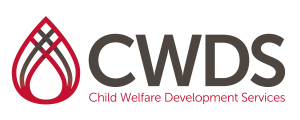CWDS Curriculum
LGBTQ and Intimate Partner Violence eLearning
Level: Advanced Practice – Lineworker, Supervisor
Credits: 1
Intended Audience: Experienced or newly hired child welfare service personnel working directly with clients.
Intended Objectives:
- Obtain a working knowledge of terms as it relates to LGBTQ and IPV
- Gain knowledge of the stages of identity development and how this can influence IPV in LGBTQ community
- Identify the unique dynamics for LGBTQ individuals when IPV is present
- Understand the impact of IPV on children and special considerations when working with LGBTQ families
- Gain knowledge of legal implications for LGBTQ individuals when IPV is identified
- Identify possible counter transference issues for participants as related to LGBTQ community
- Increase the participant’s knowledge of IPV resources available to LGBTQ individuals
- Understand biases/myths when investigating LGBTQ IPV
Topics Include:
- Definitions of commonly used terms
- Stages of Identity Development
- Prevalence of IPV in LGBTQ Community
- Abusive partner tactics
- Children in LGBTQ exposed to IVP
- LGBTQ youth dating violence
- Responding to IVP in LGBTQ families
- Resources for professionals
CalSWEC Competencies Addressed:
1.1 Student demonstrates respect, fairness, and cultural competence in assessing, working with, and making service decisions regarding clients of diverse backgrounds.
3.4 Student recognizes and accurately identifies the physical and behavioral indicators of abuse, family violence and neglect, and can assess the dynamics underlying these behaviors.
3.13 Student demonstrates the ability and self-awareness to assess his or her own value conflicts or emotional responses to clients, co-workers, and situations and seeks consultation when needed.
3.15 Student is aware of forms and mechanisms of oppressions and discrimination pertaining to low-income, non-traditional and culturally diverse families and uses this knowledge to provide equitable and effective child welfare services.
5.3 Student demonstrates understanding of the potential effects of poverty, bias,inequity, and other forms of oppression on human behavior and social systems.
6.4 Student demonstrates understanding of the dynamics and effects of trauma resulting from family conflict, divorce, and family or community violence.
8.1 Student understands how professional values, ethics, and standards influence decision-making and planning in public child welfare practice.
Posted In:eLearning



